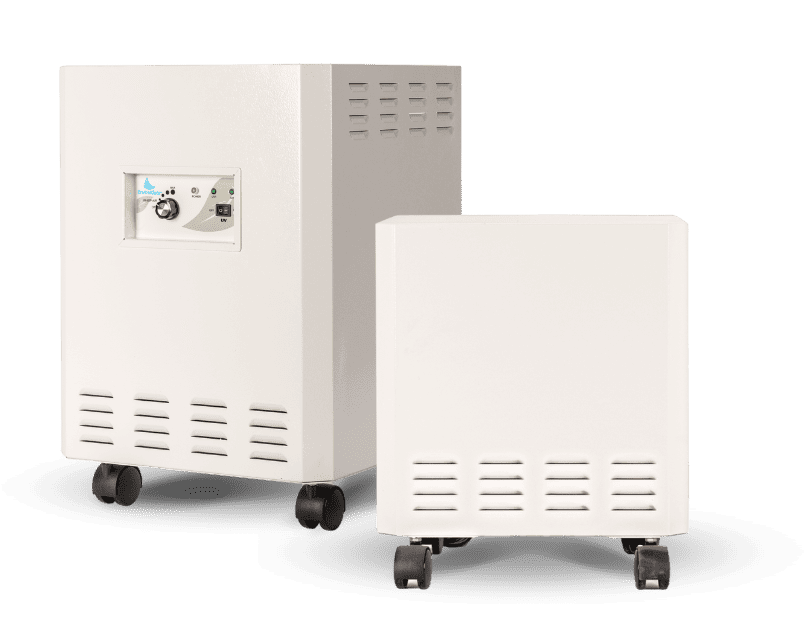Humans need air to survive; it is a fundamental part of our lives that we don’t have to consciously breathe in and out. That’s why it is extremely frightening to experience air hunger because it threatens our survival!
Running out of breath is normal during certain strenuous physical activities like exercises. Also, wearing tight clothing and spending time at high altitudes are common reasons people experience air hunger. But these are usually temporary and not necessarily signs of underlying health problems.
However, respiratory concerns, an irregular breathing pattern, allergies, heart problems, and other underlying health issues can cause breathlessness. This is especially true if you experience an unexplained and serious feeling of suffocation.
What is air hunger, and how do you know if you’re merely experiencing regular breathlessness or something more severe? And most importantly, how can you improve indoor air quality in your living spaces to reduce air hunger?
Keep reading as we serve up answers.
What Is Air Hunger, Really?
Known medically as dyspnea, air hunger is a symptom often described as a feeling of suffocation, breathlessness, difficulty breathing, or intense chest tightening. According to a 2016 study, an estimated 25% of outpatients have dyspnea, making it an extremely common symptom.
Keep in mind that dyspnea is not a condition but a symptom, so its causes, severity, and treatment will vary between individuals. And because air hunger has many causes, it is tricky to diagnose.
For example, a person with asthma will likely experience dyspnea as one of the symptoms, but that doesn’t mean everyone with dyspnea is asthmatic. Also, most chronic obstructive pulmonary disease (COPD) patients experience air hunger, but that’s not to say anyone with dyspnea has COPD.
Thankfully, preventing and managing the symptom isn’t very difficult, as you’ll learn in this article.
Causes of Air Hunger
Occasional air hunger is normal in healthy individuals. However, the symptom is often associated with serious health problems, including difficulty breathing or respiratory distress.
Some of the most common causes of dyspnea include COPD, asthma, pneumonia, congestive heart failure, and lung disease.
Sudden episodes of intense breathlessness are often caused by asthma, anxiety, allergic reactions, and exposure to high levels of carbon monoxide. Other causes of sudden or acute air hunger are low blood pressure, anemia, and collapsed lungs.
People who experience air hunger for longer than a month have chronic dyspnea. It is usually caused by serious health problems like lung cancer, obesity, COPD, asthma, lung tissue scarring (interstitial pulmonary fibrosis), and heart problems.
Although underlying health conditions can cause dyspnea, environmental pollutants are the most common triggers of the symptom. Dust, fumes, wildfire smoke, tobacco smoke, and chemicals emitted from household products can make it extremely difficult for people with dyspnea to breathe enough air into their lungs.
Mold, pollen, and other allergens can also trigger air hunger, especially in people with asthma. And tobacco smoking can make breathing very difficult for people with obstructive lung diseases like chronic bronchitis and emphysema.
However, see a doctor as soon as possible if you think you don’t have any underlying health condition but still experience air hunger. In the meantime, you may want to check out more tips if you suspect something in your home environment triggers dyspnea, especially if you or others in your household have recurring episodes of breathlessness.
Signs of Air Hunger

Shortness of breath after a workout session is understandable and usually isn’t a cause for concern. However, you want to see your doctor as soon as possible if you observe any of the following:
- You experience shortness of breath or a sensation of suffocation without any explanation. For example, you find it difficult to take in enough air even though you didn’t do strenuous exercise or activity
- You wake up from sleep gasping for breath ― a situation called PND (paroxysmal nocturnal dyspnea)
- You experience breathlessness and breathing difficulty after a normal activity that didn’t cause air hunger in the past
- You run out of breath too quickly than usual after a workout or physical activity
Air hunger can be extremely distressing for sufferers, especially if it is caused by an underlying health condition like heart failure, asthma, and lung problems. Recurring breathlessness and respiratory distress episodes can impact patients’ moods, making coping with daily activities quite challenging.
For this reason, finding effective ways to avoid the triggers must be top of mind for sufferers, especially patients with existing medical problems.
Minimizing Air Hunger Episodes in Indoor Environments
If you’ve always asked, “What is air hunger?” now you have a fair idea of the symptom, its various causes, and common indications. Seeing a doctor, undoubtedly, is your best bet if you suspect dyspnea. That said, you must take steps to avoid its causes or at least manage them.
Environmental pollution leading to poor air quality is a major contributing factor to breathing problems, including air hunger. While it might be impractical to control air in outdoor environments, staying on top of your IAQ is fairly easy.
One of the most effective solutions is to install a portable air purifier in your home, office, or wherever you spend most of your indoor time. EnviroKlenz offers top-of-the-line air purifiers for those who take air filtration in their living spaces seriously.
These air systems are designed with a patented 3-stage filtration process to capture, eliminate, and destroy 99.9% of toxic pathogens and chemicals present in indoor air. It doesn’t matter if you’re trying to get rid of particulates, pet dander, allergens, or cooking odors from your indoor space; EnviroKlenz’s air purifiers are designed to effectively remove virtually all pollutants from the air.
Their portable designs mean you don’t have to worry about moving the air purifiers between rooms in your home or office. The built-in HEPA filters combined with highly effective UVC bulbs and third-party validated air cartridges are sure to leave your indoor space with nothing but fresh and clean air.
Whether you enjoy excellent health or have asthma, COPD, or other health problems that cause dyspnea, installing an air cleaner protects you and your family from harmful gases, vapor contaminants, and other pollutants in indoor spaces.
EnviroKlenz® Medical Disclaimer:
“Any information that is provided on this website is not for the use by any commercial or personal entity without expressed written consent of the blog author. The material and statements illustrated within this blog are not intended to diagnose, treat, cure, or prevent any diseases or medical conditions. Nor does the author in any way guarantee or validate the validity, totality, or efficacy of any claims and will therefore not be held responsible for the content of any claims. Always consult your medical physician for any specific medical advice or recommendations.”









